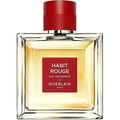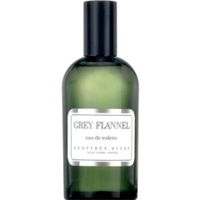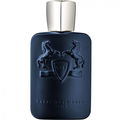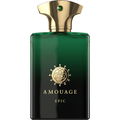The fragrance "Lippizan" is obviously dedicated to the Lippizaner horse breed. It originates from the Lipica stud farm in Slovenia, where it was bred at the end of the 18th century. As these horses are intelligent and docile, they are ideal for dressage. They were widely used at the Spanish Riding School in Vienna and became famous worldwide. Typically, Lippizaner horses are grey, but there are also other colors among them.
The Lippizaner has been in my stable, er, perfume cupboard for eight years. I always liked it. However, it was only over time - especially in the last few months - that I developed a love for him. To be honest, I hadn't really understood him before. So once again (see
Citrus Paradisi, for example), it's a fragrance that has to "click!" in order to capture its beauty.
"Lippizan" is an old-school representative of the green-leathery chypres. As you perfume aficionados know, a chypre is a classic fragrance concept that opens citrically and develops via a floral heart to an aftershave base (of oakmoss, labdanum and patchouli). There are numerous variations of this, e.g. with the addition of leather notes. This goes well with somewhat fougère-like green notes such as basil or tarragon. Then you have a green-leathery chypre. The citrus notes can be completely replaced by green notes or complemented by them. The latter is the case with "Lippizan", i.e. it contains both citrus and green notes.
Green-leathery chypres are one of my favorite scents. In short, my favorite fragrance directions are masculine rose fragrances (e.g.
Red Sea), gentleman fragrances and unusual but wearable fragrances (e.g.
Classic 1920). In my opinion, gentleman fragrances primarily include vetiver fragrances (e.g.
Vetiver Eau de Toilette), chypres (e.g.
Moustache Eau de Toilette Concentrée or
Eau de Rochas (2015)) and fougères (e.g.
Platinum Égoïste Eau de Toilette). And when it comes to chypres, the green-leathery chypres (e.g.
Versace L'Homme Eau de Toilette) are my favorite category.
While we're theorizing (which someone with my Parfumo username is allowed to do, gnhihi...), here's a note: the line between green-leathery chypres and leathery fougères (e.g.
Pour Lui Eau de Toilette) is razor-thin. In my opinion, the measure of differentiation is the "woodiness" and soapiness (barbershop style) of a fragrance. Indications for me are tree resins (fir, spruce, pine) and lavender. But there is also a green-leathery chypre with spruce and lavender, namely
Devin Eau de Cologne. So, as you can see, the border area is dazzling. It gets even more complicated when you add the aromatic fougères, which also mostly contain leather (such as
Xeryus Eau de Toilette or
Azzaro pour Homme Eau de Toilette).
Lippizaner opens citrusy, herbaceous, bitter, aftershave-like. Citrus and sage, as well as its sibling tarragon, are the main contributors to this impression. They are supported by the two essential spices thyme and cardamom. The green notes of the heart (vetiver and galbanum) and the base (oakmoss) also contribute to the green herbaceousness.
This uncompromising opening may not appeal to everyone. But this is probably true of the opening of many chypres. Over time, chypres - including this one - become more tolerable and softer. In this respect, even with Lippizan, there is no need to be afraid of a nose-rubbing environment half an hour after spraying it on.
The sage in a citrus-green environment caused me difficulties at the beginning. Then I realized that sage doesn't have to be musty at all. Sage sweets are also quite "un-herbal", but quite fresh, almost fruity. And so I carefully approached the sage in Lippizan. Now I wouldn't want to be without it in this fragrance. I enjoy the bitter-sour opening to the full (no, breaths...).
The heart of Lippizaner is much more settled. The citrus disappears, the strong herbaceousness gives way to an elegant, slightly herbaceous, slightly bitter green (with some cedar). Unsurprisingly for a chypre, floral notes join in, albeit in discreet doses. I think I can recognize rose and jasmine with a little good will, but there is no trace of iris.
Even though geranium is not present, the bitter-herbaceous and somewhat floral fragrance aura of the heart comes close to that of geranium. This chypre heart is extremely masculine and reminds me of
G-man Eau de Cologne. Frankly, I would have guessed that Lippizan is 100 percent men's. Respect to the three Parfumo ladies who also own Lippizan - alongside 34 Parfumo men.
The aftershave base of Lippizan is wonderfully soft. Gently dosed creamy musk and a light, dry, unsweet vanillity elegantly soften the rugged notes of oakmoss and leather and create a hint of "oriental chypre" atmosphere.
As comparative fragrances, I would mention
Boss Spirit Eau de Toilette,
Safari for Men Eau de Toilette and
Godolphin:
-) Boss Spirit is a green-leathery chypre with a pungent herbaceousness at the beginning (which is mainly due to tarragon), but without citrus. Its base, however, is quite different, characterized by ambered leather.
-) Safari for Men is a green-leathery chypre with numerous extensions (woody, rosy, oriental). As its name suggests, it thematizes desert aridity. I also perceive the heart of Lippizan as dry. In this respect, there is a certain parallel, even if the fragrances do smell different. After all, they share the fragrance type (green-leathery chypre) and some fragrance notes (such as tarragon and rose).
-) Godolphin is another bitter-herbaceous fragrance from the same manufacturer, Parfums de Marly. It is related to
Tuscan Leather Eau de Parfum, but is not a fragrance twin. I much prefer it due to the stronger green and the absence of raspberry.
The house of Parfums de Marly (PdM) has changed its style considerably in recent years. From a daring old-school style to a modern mass taste. I no longer consider PdM to be a niche brand, even if they do charge niche prices for their creations. I can't do anything with the company's new creations. They're not bad, but they don't touch me. Oh well, I'll just enjoy their older fragrances Lippizan (2010) and Godolphin (2011). I can only recommend these to all lovers of old-school, gentlemanly fragrances.
So now "Lippizan" and this review are a declaration of love to the green-leathery chypres fragrance type. It reminds me of Shakespeare (from "The Taming of the Shrew"): "I pine, I burn, I die!" Well, you don't have to die because of this fantastic fragrance, but an olfactory "little death" ("petite mort") is appropriate.







 Top Notes
Top Notes  Clary sage
Clary sage Tarragon
Tarragon Bergamot
Bergamot Thyme
Thyme Cardamom
Cardamom Lemon
Lemon Heart Notes
Heart Notes  Cedarwood
Cedarwood Galbanum
Galbanum Jasmine
Jasmine Patchouli
Patchouli Vetiver
Vetiver Iris
Iris Rose
Rose Base Notes
Base Notes  Leather
Leather Moss
Moss Amber
Amber Musk
Musk Vanilla
Vanilla
































